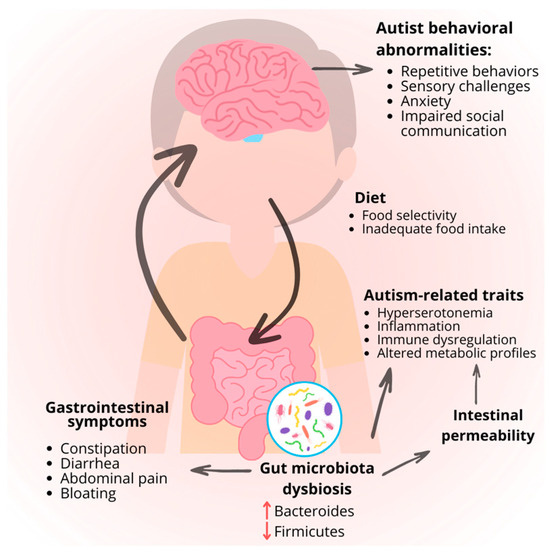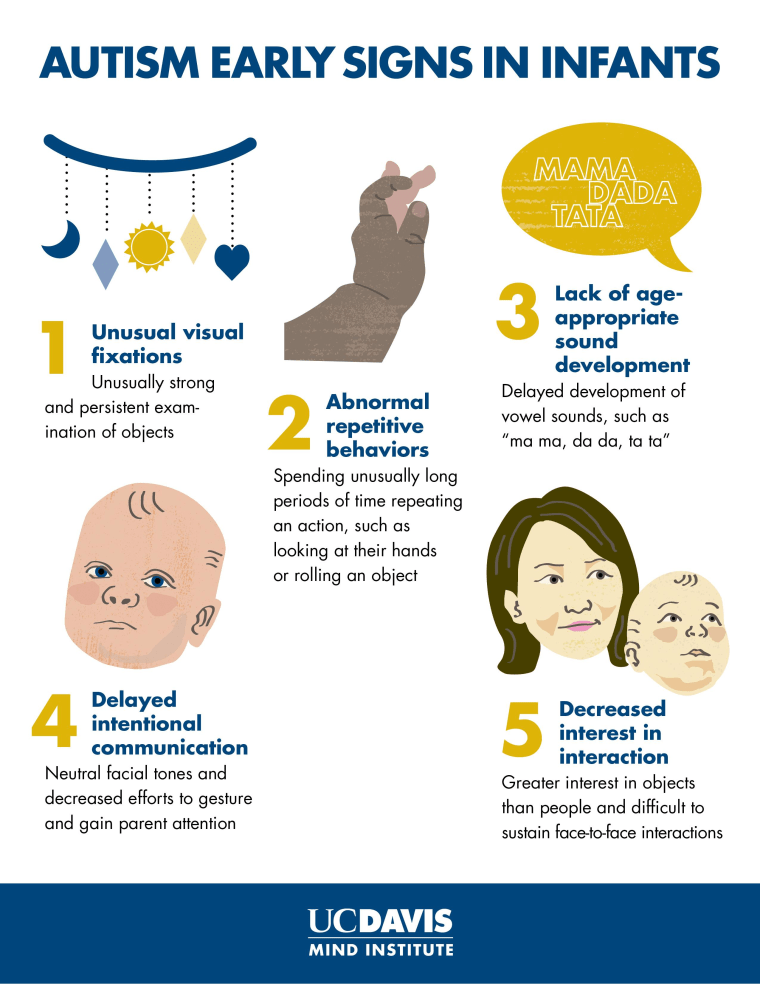Can Autism Spectrum Therapies support developing independence in teens with ASD?
Wiki Article
Comprehending the Impact of Behavioral Autism on Life and Social Interactions
You might not realize how deeply behavior autism affects day-to-day life and social communications. People on the range frequently navigate a world filled up with interaction hurdles and sensory overload. These obstacles can lead to stress and seclusion, impacting their connections and overall health.Specifying Behavior Autism and Its Qualities
Behavioral autism, commonly described as autism spectrum condition (ASD), incorporates a variety of conditions identified by difficulties in social interaction, interaction, and repetitive behaviors. You could discover that people with ASD typically struggle to analyze social cues, which can result in misconceptions in discussions. They may discover it hard to develop eye call or participate in tiny talk, making social scenarios really feel frustrating.Communication troubles can manifest in different means, from delayed speech advancement to a preference for using fewer words. By recognizing these traits, you can foster an environment that advertises approval and encourages effective interaction, aiding individuals with autism prosper in their everyday communications.
The Spectrum of Autism: Understanding Irregularity in Behavior
Autism spectrum condition (ASD) isn't a one-size-fits-all medical diagnosis; it differs commonly among individuals. You might observe that some individuals with ASD exhibit moderate signs and symptoms, while others may deal with a lot more significant difficulties. This irregularity can show up in behaviors, interests, and sensory sensitivities. You may come across people who are extremely spoken and involve easily in conversations, while others could favor solitary activities or interact non-verbally.Additionally, the means people with ASD reply to sensory input can vary substantially; some could be bewildered by intense lights or loud noises, whereas others prosper in promoting environments. The range additionally includes differences in social communications; some individuals may battle to interpret social cues, while others browse social setups with family member ease. Understanding this variability is crucial, as it aids you appreciate each person's special experience and dressmaker assistance to their particular demands, cultivating an extra comprehensive atmosphere for everyone.
Interaction Challenges Encountered by People With Autism
When you connect with people on the autism spectrum, you may notice their special interaction difficulties. They frequently face troubles with both verbal and nonverbal hints, which can impact their social interactions. Understanding these barriers is essential for fostering far better connections and assistance.
Verbal Interaction Problems
Several individuals on the autism range experience verbal communication troubles that can significantly affect their daily interactions. You may locate it challenging to reveal your ideas, sensations, or needs plainly. This can result in irritation for both you and those around you, as misunderstandings occur. You may battle with initiating conversations, preserving a topic, or understanding nuances in speech. Frequently, you might favor using easy language or recurring phrases, which can limit your capacity to involve in deeper discussions. Your pace, volume, or tone might not align with social assumptions, causing others to misinterpret your purposes. Recognizing these obstacles can assist you and your assistance network create methods to improve communication and cultivate better links with others in your day-to-day live.Nonverbal Interaction Obstacles
Verbal communication isn't the only obstacle individuals on the autism range face; nonverbal interaction barriers can be equally as significant. You could locate it tough to analyze body language, faces, and eye contact, which are essential for reliable communication. These challenges can lead to misunderstandings or false impressions of social signs, making communications really feel complex or frustrating. You may struggle to share your own feelings with nonverbal means, leaving others uncertain of your intentions or sensations. This detach can produce sensations of isolation and irritation. Identifying these obstacles is crucial for promoting understanding and compassion in your interactions. By resolving nonverbal communication, you can locate methods to improve your social experiences and boost your general lifestyle.Social Interaction Effects
Social communications can typically feel overwhelming due to the one-of-a-kind communication challenges encountered by individuals with autism. Identifying these obstacles can help you find techniques to boost interaction, such as practicing social abilities in safe setups or using aesthetic help. Understanding your needs allows you to browse social interactions with better confidence and simplicity.Social Interaction and Connection Building in Autism
While building partnerships can be testing for people with autism, comprehending their distinct point of views and communication styles can promote purposeful connections. You might discover that many people on the spectrum like straight communication and might have problem with social cues or little talk. By being simple in your interactions, you can aid produce a setting where they feel comfy.Involving in shared rate of interests can additionally offer as a bridge to much deeper links. Whether it's a leisure activity, a favored program, or a mutual interest, these typical threads can open up doors to friendship.
Every Day Life Routine: Browsing Strategies and challenges
Maneuvering everyday life routines can be especially testing for individuals with autism, specifically when unforeseen changes happen. To navigate these obstacles, consider executing visual schedules or lists.Establishing a regimen that consists of sensory breaks can also be beneficial. You can prepare time-outs throughout your day to recharge. It's crucial to connect with those around you, allowing them know your preferences and requirements. This assists create an understanding setting.
Last but not least, method mindfulness methods to handle anxiety and anxiousness. Basic breathing exercises or grounding techniques can make a considerable difference. By integrating these strategies, you can improve your everyday regimen and reduce interruptions, making life really feel much more workable.
Staminas and Capabilities of Individuals on the Autism Spectrum
Understanding daily life regimens is simply one element of the autism experience. Several individuals on the autism spectrum have official source exceptional strengths and capabilities that establish them apart. You could discover that your focus to detail is extraordinary, permitting you to succeed in tasks that call for precision and focus. Your capability to assume outside package can result in cutting-edge services in different circumstances.Additionally, your memory skills usually radiate, especially in areas of interest. Autism Therapist. This propensity for maintaining details can make you a valuable resource in fields like art, scientific research, or technology. You may also show solid visual reasoning, allowing you to visualize complicated principles and fix problems creatively
Additionally, your special point of view on the globe can promote empathy and understanding in others, enhancing social communications. Welcoming these toughness not only enhances your self-confidence yet additionally helps others appreciate the diverse talents you give the table.
Creating Comprehensive Settings for Individuals With Autism
Producing comprehensive environments for people with autism begins with creating sensory-friendly areas that accommodate their special requirements. You can also promote opportunities for social interaction, assisting to develop friendships and connections. By making these changes, you'll add to a more inviting ambience for everyone.Creating Sensory-Friendly Spaces
While creating sensory-friendly areas, it's vital to assess the unique requirements of individuals with autism. Start by selecting soothing colors and soft lights to develop a comforting atmosphere. Integrate quiet areas where individuals can reenergize and pull back when overwhelmed. You'll want to minimize loud sounds and disturbances, utilizing soundproof products or white noise makers to help maintain tranquility. Take into consideration responsive elements like soft textiles or fidget-friendly objects that can supply convenience. Establish that rooms are flexible, enabling simple reformation to accommodate different tasks. Ultimately, include aesthetic schedules or clear signs to aid individuals navigate the room confidently. By attentively integrating these components, you can produce an inviting ambience that sustains sensory demands and advertises overall well-being.Advertising Social Communication Opportunities
Designing sensory-friendly spaces not only addresses individual convenience however likewise sets the stage for significant social communications among individuals with autism. Urge peer mentoring, matching individuals with autism with encouraging peers who can guide them via social situations. By implementing these strategies, you can improve social chances, aiding individuals with autism construct relationships and enhance their social abilities in a safe, inviting atmosphere.
Regularly Asked Concerns
Just How Can Friends Support A Person With Behavioral Autism?
You can support a pal with behavioral autism by holding your horses, paying attention proactively, and respecting their borders. Participate in activities they appreciate, connect honestly, and develop a comfy environment where they feel valued and comprehended.What Resources Are Readily Available for Moms And Dads of Children With Autism?
You can check out various sources for moms and dads of kids with autism, consisting of support teams, educational internet sites, and regional neighborhood services. Getting in touch with other parents can additionally offer useful insights and shared experiences to aid navigate next difficulties.
Can Behavioral Autism Adjustment Gradually?

Yes, behavior autism can change with time. You may notice changes in communication, social abilities, and actions as your youngster expands. Early intervention and support typically play essential roles in these developmental adjustments.
How Do Sensory Sensitivities Influence Day-to-day Live?
Sensory level of sensitivities can make daily experiences overwhelming. You could have problem with intense lights or loud noises, bring about stress and anxiety or avoidance. Locating atmospheres that accommodate your demands can greatly improve your comfort and overall day-to-day life.What Prevail Misconceptions Regarding Behavioral Autism?
You could think behavioral autism just affects interaction skills, however it's more complicated. Lots of assume people do not have compassion or knowledge, which isn't real. Recognizing these misunderstandings helps foster acceptance and assistance for those on the range.Behavioral autism, usually referred to as autism spectrum condition (ASD), encompasses a variety of conditions characterized by obstacles in social communication, interaction, and recurring behaviors.Social interactions can commonly feel frustrating due to the one-of-a-kind communication challenges faced by people with autism.Designing sensory-friendly areas not only addresses private comfort but also sets the phase Homepage for purposeful social communications among people with autism. Motivate peer mentoring, coupling individuals with autism with helpful peers that can direct them via social situations. By implementing these methods, you can boost social possibilities, assisting individuals with autism construct relationships and enhance their social skills in a safe, welcoming environment.
Report this wiki page